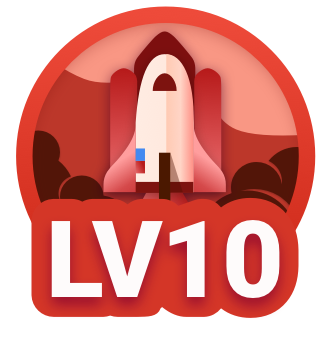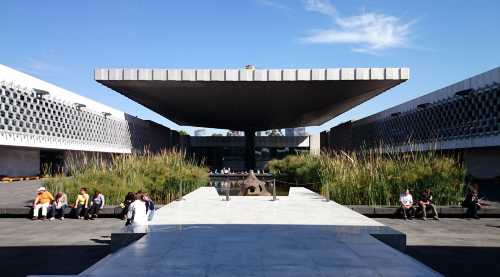App
Customer Support
Find Bookings
Popular Trip Moments
A futuristic haven of beauty and art, the Soumaya Museum. | Basilica of Our Lady of Guadalupe | [MiCompaChava | Marisqueria in Coyoacán, where you can feel the sea breeze] | [Vasconcelos Library | An "oasis of knowledge" filled with books and greenery] A futuristic space created by ceiling-hung shelves and a botanical garden | Mexico City Transit | Shopping at the Mercado Market in Mexico | Somaya Museum | National Museum of Anthropology | Independence Monument | Guadalupe Basilica | Mexico City - A Vibrant Metropolis Full of Wonders | Mexican Breakfast Travel Report | The Castle on the Hill - Chapultepec Castle in Mexico City | Mexico's New Luxury Hotspot! Hidden So Deep Yet Discovered | A fitting museum for Mexico’s diverse history and culture! | Mexico City 1 day tour🇲🇽 | Tacos, Castles, and Culture: My Mexico City Highlights 🌮 🇲🇽 | Art a bit different | Four Seasons Hotel Mexico City: A True Urban Oasis | The St. Regis Changsha: Where Luxury Meets Comfort | Mexico City Postal Palace | Life advice! Read this guide before visiting Mexico City | [Mexico Tourism] Mexico City, Palacio de Bellas Artes | [Mexico Trip] Enjoy art and food tours in Coyoacan! | Michelin Star Restaurants to Try in Mexico City While Traveling Abroad em | Overseas travel: The Metropolitan Cathedral, a representative cathedral of Mexico City | Overseas travel Mexico City Estanquillo Museum Museum | The National Museum of Anthropology is a must-see attraction in Mexico City while traveling abroad. | Overseas travel The largest and most beautiful castle in Mexico City, Chapultepec Castle | Librería Porrúa, a bookstore cafe in Mexico City, a travel destination abroad
Recommended Attractions at Popular Destinations
Attraction near Bangkok | Attraction near Manila | Attraction near Tokyo | Attraction near Taipei | Attraction near Hong Kong | Attraction near Seoul | Attraction near Kuala Lumpur | Attraction near Los Angeles | Attraction near Shanghai | Attraction near New York | Attraction near Shenzhen | Attraction near Osaka | Attraction near Singapore | Attraction near London | Attraction near Guangzhou | Attraction near San Francisco | Attraction near Beijing | Attraction near Macau | Attraction near Bali | Attraction near Jakarta | Attraction near Paris | Attraction near Ho Chi Minh City | Attraction near Istanbul | Attraction near Phuket | Attraction near Chicago | Attraction near Seattle | Attraction near Toronto | Attraction near Orlando | Attraction near Cebu | Attraction near Chiang Mai
Popular Restaurants in Mexico City
Salazar | Samos Sabores Míos | Daikoku - Reforma | Tokoya | BLACK LEGEND Restaurant Bar | Fogo de Chao - Acoxpa | Chang An | Morimoto | Suntory Del Valle | Eloise - Mexico | Fifty Mils - Four Seasons Mexico | Ciena | Madre Roof | La Vicenta - Toreo | Señora Tanaka - Masaryk | Cancino - Coyoacán | Cocina Abierta - Artz | Arango | Suntory - Pedregal | Enrico Caruso | Fonda Fina | Bencomo | Asai Kaiseki Cuisine | KOYA | Animal - Masaryk | Magda | Narú | Cabuya Rooftop | Manaw | Marea Restaurante de Mar
Popular Ranked Lists
Popular Best Things to Do in Nan'ao | Popular Best Things to Do in Zhijiang | Popular Premium Hotels in Oakland | Popular Premium Hotels Near Kamyzyaksky District | Popular Must-Visit Restaurants in Melbourne | Top 3 Best Things to Do in Bozhou | Popular Best Things to Do in Yuyao | Top 3 Best Things to Do in Xuchang | Popular Premium Hotels in Okaloosa County | Top 9 Local Restaurants in Lushan Global Geopark | Popular Must-Visit Restaurants in Sapporo | Popular Luxury Hotels Near Fishers | Popular Must-Visit Restaurants in Hanoi | Popular Best Things to Do in Ziyuan | Popular Must-Visit Restaurants in Xi'an | Top 7 Best Things to Do in Benxi | Popular Luxury Hotels Near Alfonso | Popular Must-Visit Restaurants in Tokyo | Top 12 Best Things to Do in Xilingol League | Top 5 Best Things to Do in Daxing'anling | Popular Must-Visit Restaurants in Sydney | Popular Premium Hotels in Mbabane | Popular Best Things to Do in Heyuan | Popular Must-Visit Restaurants in Osaka | Popular Premium Hotels Near Douglas County | Top 4 Best Things to Do in Chaozhou | Popular Best Things to Do in Daocheng | Popular Must-Visit Restaurants in Fukuoka | Popular Premium Hotels Near Samosdelka | Popular Luxury Hotels Near Dzwirzyno
Payment Methods
Our Partners
Copyright © 2025 Trip.com Travel Singapore Pte. Ltd. All rights reserved
Site Operator: Trip.com Travel Singapore Pte. Ltd.
Site Operator: Trip.com Travel Singapore Pte. Ltd.
























